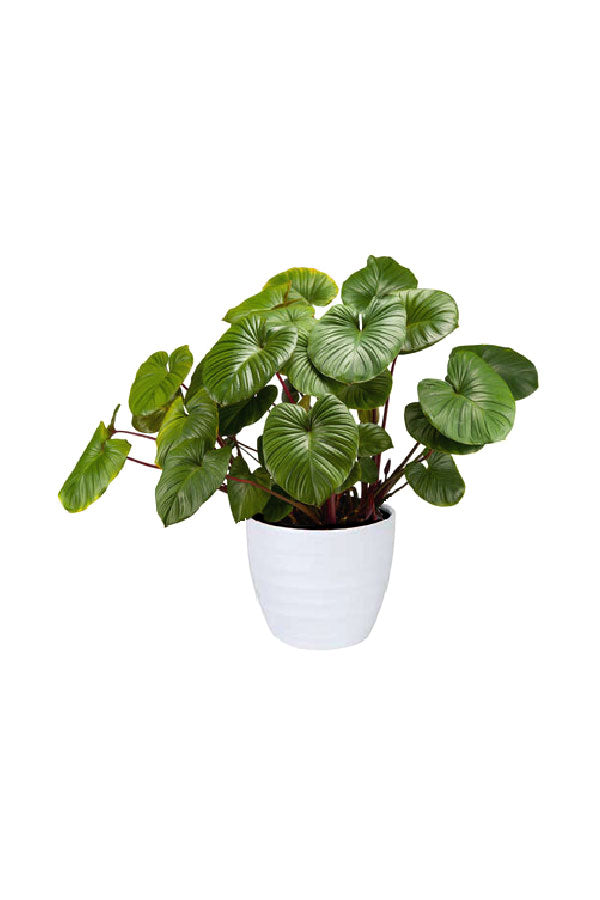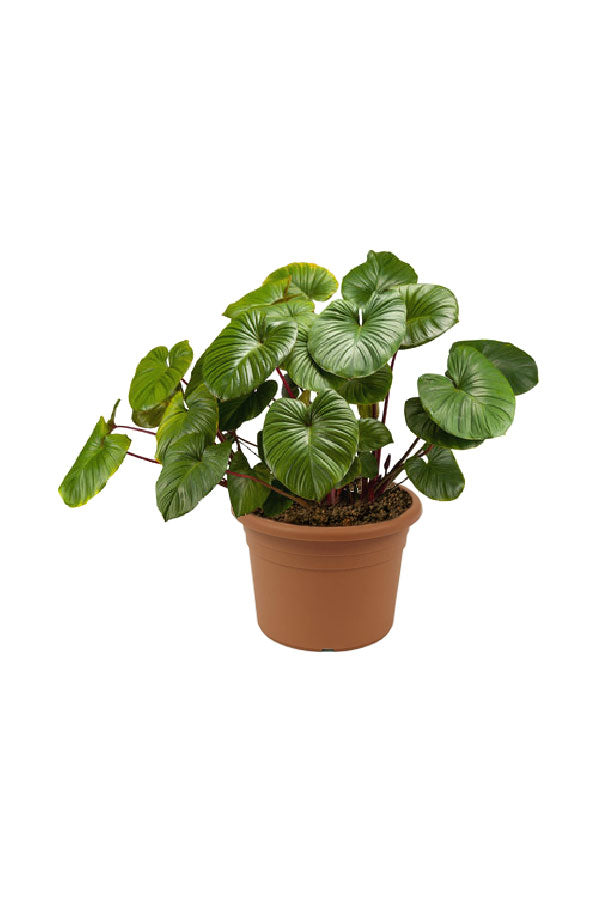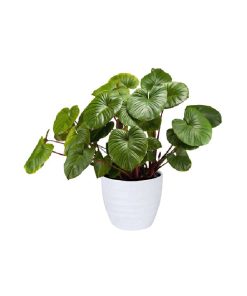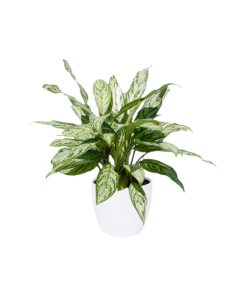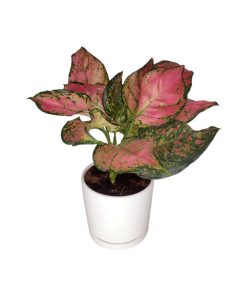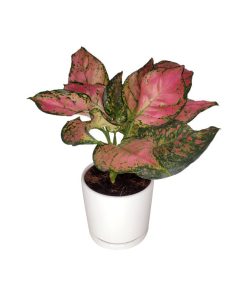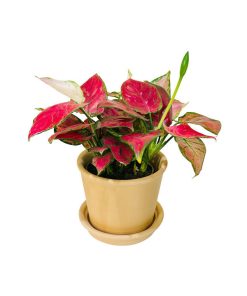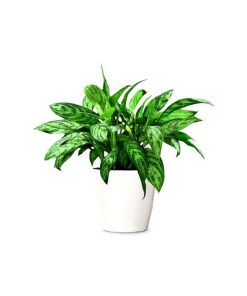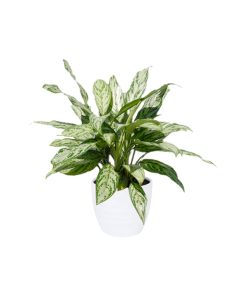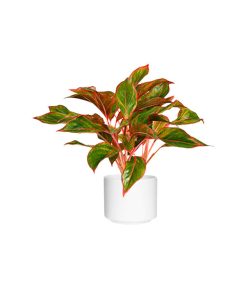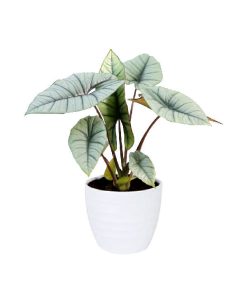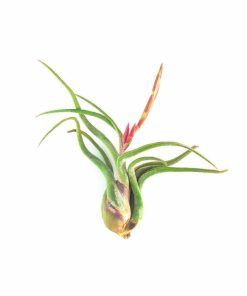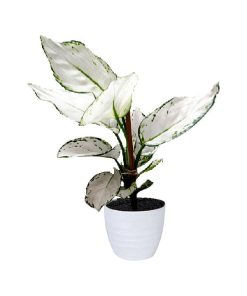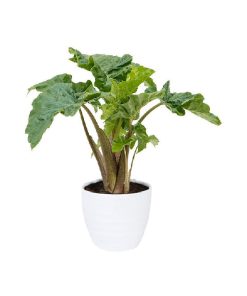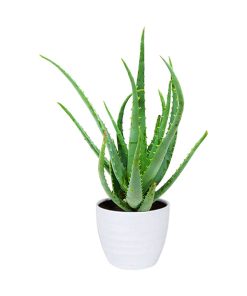Homalomena Rubescens Maggy Plantsworld.ae
د.إ 126,00 د.إ 50,40
ABOUT THE PLANT
Homalomena is a genus of tropical plants in the family Araceae, native to Southeast Asia and the Pacific Islands. It includes around 170 species, and many of them are popular as houseplants due to their attractive foliage. Here are some general characteristics and care guidelines for Homalomena plants:
Appearance: Homalomena plants have broad, lance-shaped leaves that can vary in color and pattern depending on the species and cultivar. The foliage can be dark green, light green, silver, or variegated with patterns of spots, stripes, or marbling. Some species also produce inflorescences with small flowers, but they are not as showy as the foliage.
Size: The size of Homalomena plants can vary widely depending on the species and growing conditions. Some species are compact and stay small, while others can grow several feet tall.
Light requirements: Most Homalomena species prefer bright, indirect light.They can tolerate lower light conditions, but the colors and patterns on their leaves may not develop as vibrantly. Avoid exposing them to direct sunlight, as it can scorch the leaves.
Watering and humidity: Homalomena plants prefer slightly moist soil but should not be kept overly saturated or waterlogged. Allow the top inch of soil to dry out before watering again. These plants appreciate high humidity, so misting the leaves or placing them in a humid environment can be beneficial.
Temperature and environment: Homalomena plants thrive in warm temperatures between 65-85°F (18-29°C). They prefer a tropical climate and are typically grown as indoor plants. Avoid exposing them to cold drafts or temperatures below 60°F (15°C).
Soil and fertilization: Use well-draining, peat-based soil for Homalomena plants. Regular fertilization during the growing season (spring and summer) with a balanced houseplant fertilizer can promote healthy growth. Follow the instructions on the fertilizer packaging for proper dosage.
| Size | 40-50 cm |
|---|---|
| Pot | Nursery Plastic Pot, White Ceramic Pot |
Fast Shipping & Professional Packing
We are able offer many shipping options thanks to our long-term partnership with UPS FedEx DHL. Our warehouse staff is highly educated to pack your items exactly as per the specifications we offer. Your items will undergo an extensive inspection and will be securely secured prior to being delivered. We ship to thousands clients every day in a variety of countries. This shows our commitment to becoming the biggest retailer online in the world. The distribution centers and warehouses distribution are in Europe, as well as the USA.
Orders with more than one item are assigned processing times for each item.
We will thoroughly inspect all products before they are shipped. The majority of orders will be shipped within 48 hours. Delivery is expected to take between 3 and 7 days.
Returns
Stock is dynamic. It's not completely managed by us since we are involved with multiple parties such as the factory and the storage. So the actual stock may alter at any time. Please understand it may happen that your order will be out of stock once your order has been made.
Our policy is valid for 30 days. If you don't receive the product within the 30 days period, we're not able to issue the option of a refund or exchange.
The item cannot be used and in the original packaging. The item must be in its original packaging.
Related products
Indoor Plant
Indoor Plant
Indoor Plant
Indoor Plant
Indoor Plant
Indoor Plant
Indoor Plant
Indoor Plant
Indoor Plant
Indoor Plant
Indoor Plant
Indoor Plant
Indoor Plant
Indoor Plant
Indoor Plant
Indoor Plant
Indoor Plant
Indoor Plant
Indoor Plant
Indoor Plant
Indoor Plant
Indoor Plant
Indoor Plant
Indoor Plant
Indoor Plant
